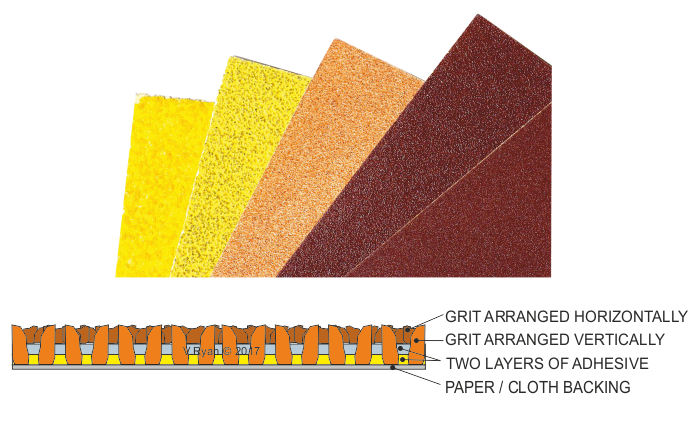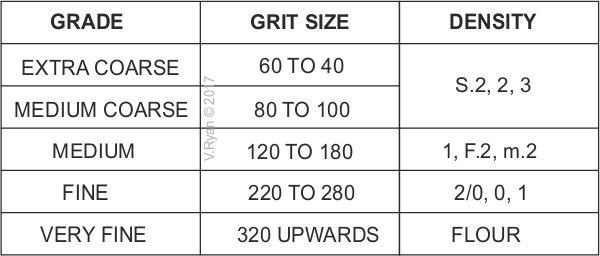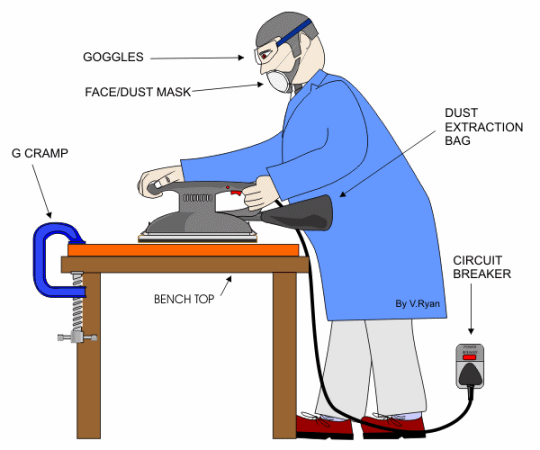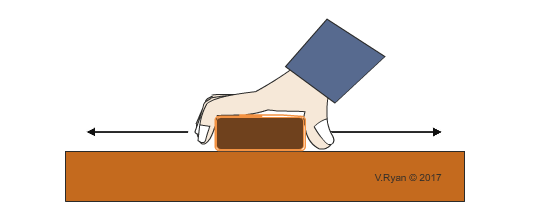V.Ryan © 2017




| CLICK HERE FOR INDEX PAGE |
| SANDING / GLASS PAPERING NATURAL WOOD |
V.Ryan © 2017 |
| PDF FILE - CLICK HERE FOR PRINTABLE WORKSHEET |
| To finally prepare natural wood and most boards for a suitable finish, different grades of glass paper are used, to produce a blemish free and smooth finish. Although most people refer to sand paper as an abrasive, it no longer exists. Glass paper is often referred to as sand paper, but there are other similar abrasive sheets including aluminium oxide, silicon carbide and garnet. Abrasives have a paper or cloth backing, that holds the particles of abrasive in place. |
| Quality abrasive paper is composed of several layers, as shown by the diagram below. |
 |
| Glass paper / abrasive sheets are supplied in a number of grades, sometimes referred to by grit size or the density of grit, as seen in the table below. It is worth noting, that manufacturers vary slightly in their description of grit size and density, but the table below is a general outline of the grades, available at retailers and suppliers. |
 |
| Usually, a sheet sander is used to sand / smooth larger wood surfaces. The abrasive sheet is firmly ‘clipped’ into the sheet sander. When in use, the rectangular base of the sander vibrates at 1200 rpm (revolutions per minute). This ‘sands’ the surface beneath it. If the surface requires a lot of sanding, start with ‘coarse’ abrasive, then use a medium grit followed by fine abrasive. |
 |
| The surface is then finished by hand, using fine abrasive. |
 |
| CLICK HERE FOR RESISTANT MATERIALS INDEX PAGE |
|